
| What is Flavor and Fortune? |
| How do I subscribe? |
| How do I get past issues? |
| How do I advertise? |
| How do I contact the editor? |
Read 13043420 times
Connect me to:
| Home |
| Articles |
| Book reviews |
| Letters to the Editor |
| Newmans News and Notes |
| Recipes |
| Restaurant reviews |
| Article Index (all years, slow) |
| List of Article Years |
| Article Index (2025) |
| Article Index (last 2 years) |
| Things others say |
| Related Links |
| Log In... |
| Authors |
| Categories & Topics |
Mushrooms of Immortality
| by Jacqueline M. Newman |
Food as Herbs, Health, and Medicine
Spring Volume: 2006 Issue: 13(1) page(s): 9 and 16
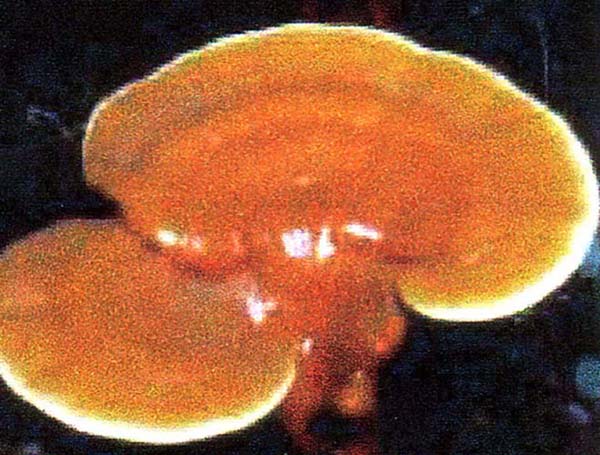 Known in Chinese as lingzi, this 'Divine Mushroom' or 'ultimate herb' is in Japanese, called the areishi mushroom. All over Asia, it is considered a 'mushroom of immortality.' This fungus has many names including ‘ten thousand year mushroom,' 'good fortune mushroom,' and Panacea polypore. It is considered as ancient as China, and was written about in the Ben Cao Gang Mu or Herbal Pharmacopeia. In that classic volume, Shen Nong, the Herbal Emperor also known as the 'Father of Herbal Medicine,' wrote that when eaten, this superior herb makes the body light and young, and turns the eater into an immortal.
Known in Chinese as lingzi, this 'Divine Mushroom' or 'ultimate herb' is in Japanese, called the areishi mushroom. All over Asia, it is considered a 'mushroom of immortality.' This fungus has many names including ‘ten thousand year mushroom,' 'good fortune mushroom,' and Panacea polypore. It is considered as ancient as China, and was written about in the Ben Cao Gang Mu or Herbal Pharmacopeia. In that classic volume, Shen Nong, the Herbal Emperor also known as the 'Father of Herbal Medicine,' wrote that when eaten, this superior herb makes the body light and young, and turns the eater into an immortal.
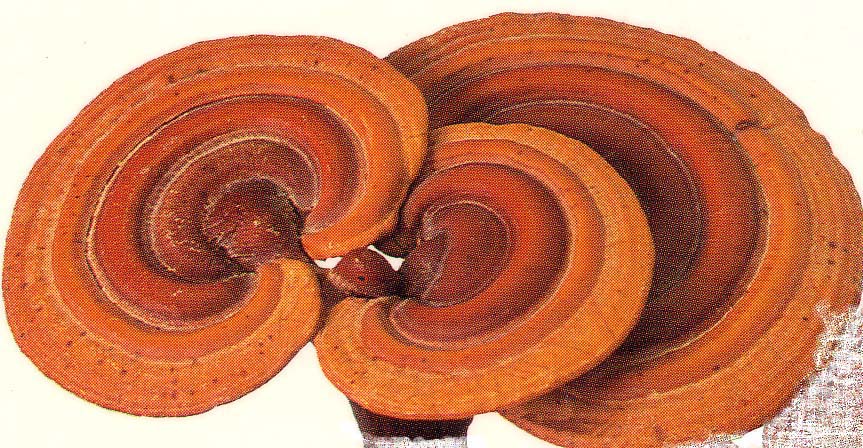 Most often, the lingzi appears on a tree trunk at or near ground level. It starts out white or light in color, gets darker as it grows and ages, and can have a white margin or edge. There are many varieties, colors, and shapes, and there are many stories about them and what they can do. The first Chinese character in its name, ling, is said to depict a praying shamen and rain. The second or zi also spelled zhi means shiny or brilliant.
Most often, the lingzi appears on a tree trunk at or near ground level. It starts out white or light in color, gets darker as it grows and ages, and can have a white margin or edge. There are many varieties, colors, and shapes, and there are many stories about them and what they can do. The first Chinese character in its name, ling, is said to depict a praying shamen and rain. The second or zi also spelled zhi means shiny or brilliant.
In Shen Nong’s classic volume, and almost all volumes since, the taste of the lingzi is reported as bitter, and its energy is considered neutral. Most say this mushroom has no toxicity. Some herbal volumes report that it cures ‘bad things’ found in the chest. Others say it is good for the qi in the heart or that it tones the spleen, increases wisdom, improves memory, retards aging, lengthens life, and provides spiritual power. Who would not want to ingest this miracle magical mushroom?
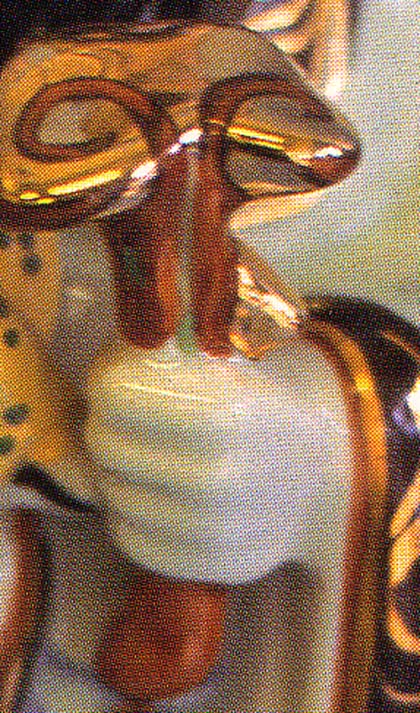 Highly touted and very desirable, the first emperor of the Qin Dynasty (221 to 206 BCE) sent more than a thousand people to find these ultimate magical herbal mushrooms. They never returned. Now, many many wonder where they went and why they did not come back. Modern researchers still look for answers to these and many more questions; but mostly seek to learn about and test the supposed abilities.
Highly touted and very desirable, the first emperor of the Qin Dynasty (221 to 206 BCE) sent more than a thousand people to find these ultimate magical herbal mushrooms. They never returned. Now, many many wonder where they went and why they did not come back. Modern researchers still look for answers to these and many more questions; but mostly seek to learn about and test the supposed abilities.
Because it is seen in art, architecture, and design, most Chinese know of its symbolism and its cultural value. In ancient times, it was depicted on the emperor’s scepter (a ceramic one is illustrared) and considered one of his most valuable possessions. Most believe it was placed there because of all the good attributed to it.
In many regions, a new bride is told to bring lingzi with her when moving to her husband’s home. She also does so for luck. She and most Chinese believe that the Ganodema lucidum, its correct botanical name, is beneficial for many health conditions. Brides and most Chinese know most varieties are kidney-shaped, a few are antler-shaped. Those resembling antlers are the most rare. Many brides bring along both, if they can find/afford them. 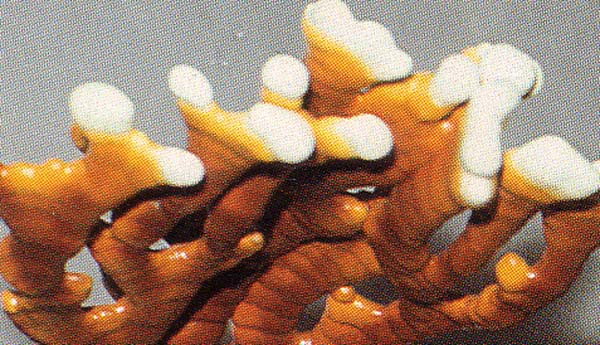
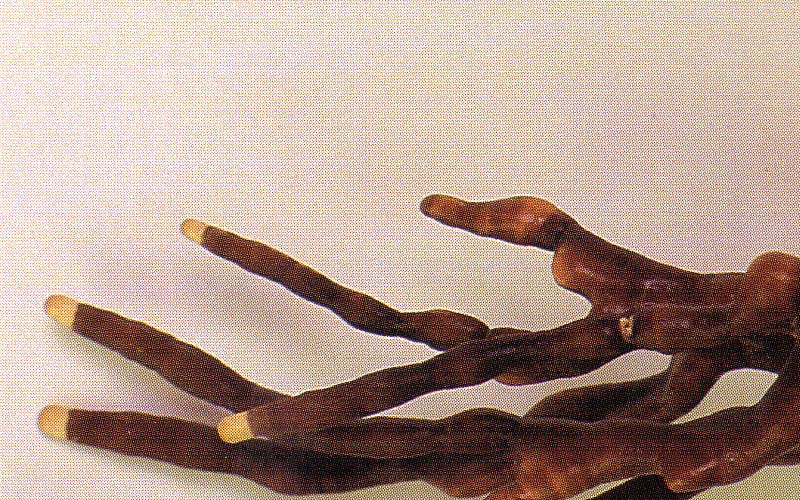
The red lingzi are most common and medicinally thought to be the best. Some of the other colors are red-orange, black or purple, and brown. Red-orange ones are Ganodema tsugae, Ganodema oregonense is dark brown, Ganodema applanatum is brown, and Ganodema sinense is black or purple. One resource advises brown ones are ancient and legendary. Not everyone agrees.
Shen Nong indicates these mushrooms can be found in six different colors. He speaks of black, purple, red, white, green, and yellow, and interestingly, does not mention brown ones, Furthermore, he indicates that wild ones are preferred, fresh ones only second best. These days, dried ones are most popular; fresh ones rarely available. Christopher Hobbs, in Medicinal Mushrooms (© 1996, Interweave Press) indicates there are taste differences by color. He reports red ones bitter, purple ones sweet, and the black ones salty. We have only tasted red ones; and darker red ones do seem more bitter.
This mushroom grows on decaying stumps, is a polypore, and likes dark damp forests. Different varieties prefer particular wood-types. For example, Ganodema lucidum seems to grow best on oak and chestnut, Ganodema tsugae on conifers such as hemlock, spruce, and pine, etc. Many varieties are now cultivated by inoculation as well as freshly collected in China, Japan, Canada, and in the United States. In China, they are harvested wild on Mt. Tai in the Shandong province, on Mt, Hengshan in the Hunan province, and in other places, and cultivated everywhere.
They are readily available in many Asian countries fresh and dried, whole, cut up, and in powdered form. They can be found in tablets, capsules, powders, tinctures, and syrups. Chinese herbal stores carry them whole, Asian supermarkets carry them in many of the aforementioned forms. Chinese home-owners, herbal practitioners, and restauranteurs prepare them in soups, stews, teas, and decoctions. They might grind or smash them, then simmer them for hours until about sixty percent of the water boils off. The remaining liquid is then strained. For those who have problems ingesting bitter tastes, they sweeten the decoction with honey; never with sugar. When using this mushroom fresh, any remaining solids can be decocted two or three times. Those who gather their own, often dry them, then chop them into pea-sized pieces. Herbalists say to use about one-tenth of an ounce boiled in water when making lingzi tea.
Some people consume lingzi daily as a dietary supplement, others only consume theirs occasionally. Most use this herbal item to increase or maintain qi. Still others only consume lingzi only on advise of a medicinal practitioner. We have read about its use for the elderly, and for those considered mentally disturbed. One svelte young lady we met in a tea emporium said that she takes hers every morning half hour before breakfast. When asked why, she replied, “to remain my slim.”
Hers is but one of many testimonials for use of lingzi. Studies are investigating this herb’s value for HIV patients and for pain relief. A few look at its reducing allergic reactions, controlling inflammations, and for reducing viral infection intensity. Some investigate if it can reduce tumors, pathogenic bacteria, and blood pressure. What components in the lingzi make it valuable is also under scrutiny. Most say its effectiveness is thanks to its polysaccharides, triterpenoids, alkaloids, and/or steroids. One recent Japanese study shows regression of tumors in mice.
Christopher Hobbs, in Medicinal Mushrooms, and Ron Teeguarden, along with Terry Willard are considered tops in knowledge about the lingzi and other mushrooms. For those interested in more information, search their names on the web; also check out the Willard book by Sylvan Press, pictured here.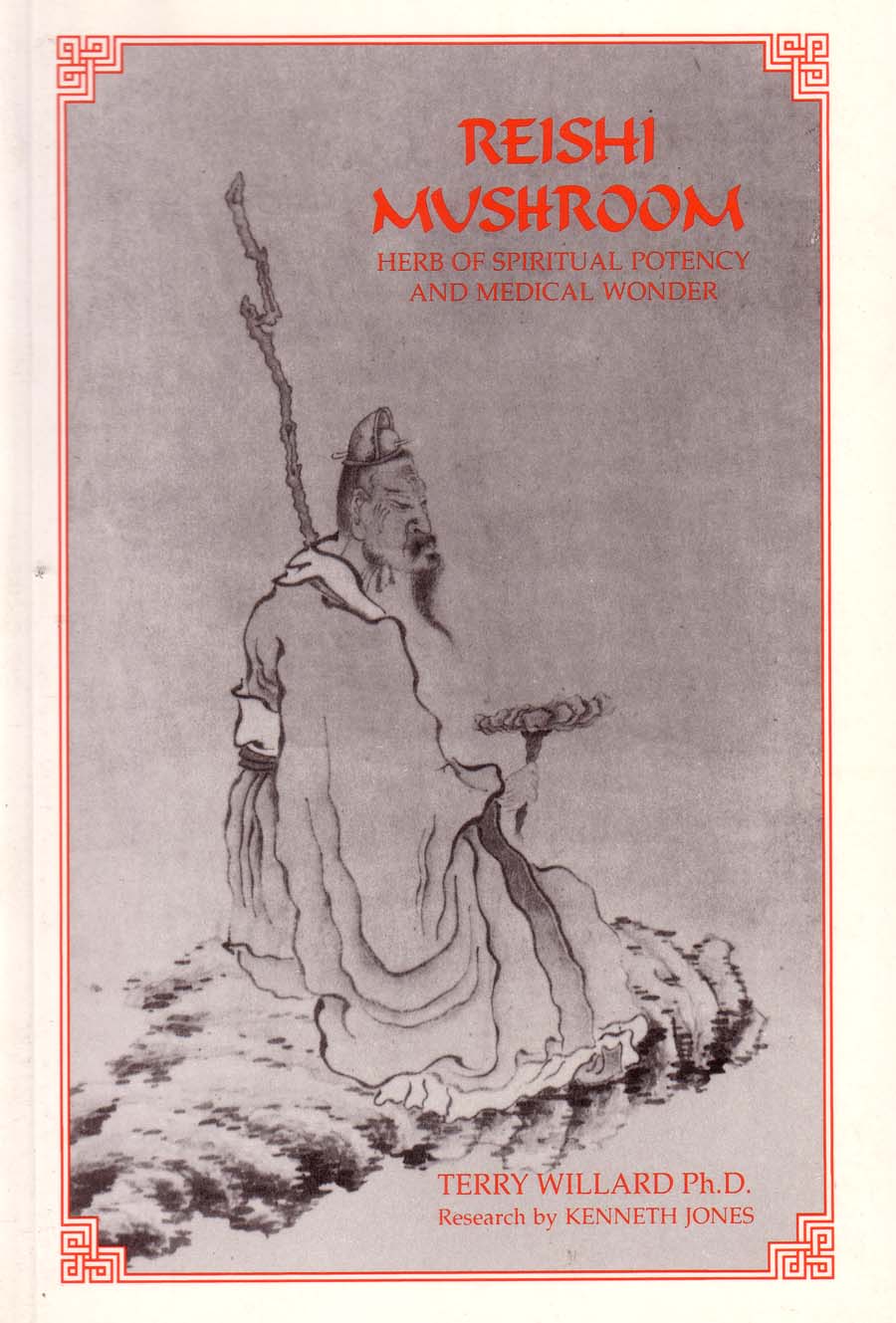 And, be aware that Teeguarden says that many products claiming to be made from this mushroom are not as good as they could be, so be cautious should you buy any. He claims that they need to be extracted from wild mushrooms and not from inferior hot house varieties or from their mycelium. Good ones, he says, rank in Asia with ginseng, deer antler, astralagus, and cordyceps as pre-eminent tools valuable for attainment of radiant health.
Content does vary with different strains. The caps are the richest source of their triterpine acids. The wood they are grown on determines dietary concentrations of their valuable constituents, their spores are thought anti-aging. Should you consume this mushroom of immortality? Some say perhaps. Others say: In what amounts and when? Most say to take vitamin C when consuming any because it increases their absorption. Small recent clinical studies report reduction of blood fat levels, fewer allergies, etc. None say they proffer immortality. The College of Natural Healing; #302-1220 Kensington Road NW; Calgary, Canada T2N 3P5 is pursuing this holy grail. You may want to be in touch with them.
And, be aware that Teeguarden says that many products claiming to be made from this mushroom are not as good as they could be, so be cautious should you buy any. He claims that they need to be extracted from wild mushrooms and not from inferior hot house varieties or from their mycelium. Good ones, he says, rank in Asia with ginseng, deer antler, astralagus, and cordyceps as pre-eminent tools valuable for attainment of radiant health.
Content does vary with different strains. The caps are the richest source of their triterpine acids. The wood they are grown on determines dietary concentrations of their valuable constituents, their spores are thought anti-aging. Should you consume this mushroom of immortality? Some say perhaps. Others say: In what amounts and when? Most say to take vitamin C when consuming any because it increases their absorption. Small recent clinical studies report reduction of blood fat levels, fewer allergies, etc. None say they proffer immortality. The College of Natural Healing; #302-1220 Kensington Road NW; Calgary, Canada T2N 3P5 is pursuing this holy grail. You may want to be in touch with them.
Rare is the actual cookbook that provides a recipe for cooking lingzi. Herbal volumes tell how to make them into teas and soups. We did locate a few recipes, they are below, and if you know of others, let us know.
| Immortality Tea |
|---|
1 lingzi mushroom, broken into small pieces, about a teaspoon’s worth per person Preparation: 1. Boil in several cups of water, about twenty times the volume of the mushroom. Remove from the heat source and allow to steep for half an hour. 2. Reheat entire contents to the boiling point, strain, and serve. |
| Wild Mushroom Soup |
|---|
1/2 pound assorted wild mushrooms, cut in quarters 1/2 fresh lingzi mushroom (about a two-inch square piece cut into small pieces) 1 Tablespoon vegetable oil 1 onion, sliced 1 two-inch piece Yunnan or Smithfield ham, minced 1 small Chinese yam, peeled and diced 2 egg yolks, beaten until light yellow 2 Tablespoons garlic shoots, minced salt and pepper, to taste Preparation: 1. Heat wok or fry pan and add all mushrooms, the onion slices, and the oil. Fry for two minutes, then add the minced ham and fry another minute before adding the yam cubes. Fry this for two minutes, then add six cups of boiling water, and bring to the boil, then immediately reduce the heat. 2. Simmer for half an hour, then add egg yolks, garlic shoots, and salt and pepper, and serve. |
| Longevity Stew |
|---|
3 Tablespoons quarter-inch pieces dried lingzi mushrooms 2 pounds mutton (or lamb) 3 Tablespoons roasted or dry-fried peanuts 6 Tablespoons dried black beans 2 Tablespoons ginseng, minced 3 Tablespoons longan pulp 3 sea horses (optional) 1 sea dragon (optional) 1 pound yams, peeled and cut into one-inch pieces Preparation: 1. Soak mushrooms for five minutes, then drain. 2. Bring mutton to the boil, boil for two minutes, then remove and discard the liquid and rinse the meat with warm water to remove any foam clinging to the meat. 3. Cover the meat with six cups water, add mushrooms, peanuts, black beans and ginseng and bring to the boil, reduce heat, then simmer for three hours, replacing the water when/if it is less than two cups worth. 4. Add the rest of the ingredients and simmer for another hour or until meat is very tender. Then discard optional ingredients. Boil for five minutes, mashing some of the yams to thicken the liquid, then serve. |
| Oxtail, Sea Cucumber and Kidney |
|---|
1 ox tail, cut into two-inch pieces 1 sea soft soaked cucumber, cut into one-inch pieces 1 pork kidney, cut in half, and remove all the white veins, then cut into two-inch pieces 2 Tablespoons minced ginseng 3 Tablespoons peanuts 2 Tablespoons dried pea-size lingzhi mushroom pieces 1/2 cup Chinese rice wine 1 teaspoon coarse salt 1/2 teaspoon ground white pepper 10 Chinese red dates, pits removed Preparation: 1. In a heavy pot or casserole bring six cups of water to boil, add oxtail and reduce heat slightly and boil for five minutes, then remove them retaining water. Add in the sea cucumber and boil it for four minutes, then remove. Next, add the kidney pieces and simmer them for three minutes before draining and removing them. Discard all the water. 2. Return oxtail, sea cucumber, and kidneys to the pot, cover with cold water, add ginseng, peanuts, and lingzi mushroom pieces and simmer for three hours. Then add dates, wine, and salt and simmer another half hour or until dates are very soft, even mushy. Much of the liquid will have evaporated, only add more if there is less than enough to barely cover the ingredients. Then serve. |
| Lingzi and Pork Shank Soup |
|---|
1/4 small dried lingzi mushroom 1/2 pound shank or pork 10 Chinese brown or black dates 1 piece tangerine peel Preparation: 1. Soak mushroom for half an hour, remove any stem, and slice. 2. Blanch mushroom slices twice in boiling water for half minute each time. 3. Blanch pork shank, then simmer it with three quarts of water for one hour. Then strain liquid returning it to the pot. 4. Put all ingredients in a pot, add more boiling water so that altogether there are four quarts of liquid. Cover, reduce heat to simmer, and cook for two more hours. Then remove the meat, and discard all visible fat along with any bones. Tear the meat into small pieces, and put it back into the soup liquid. Discard the tangerine peel, reheat, and serve. |

Copyright © 1994-2025 by ISACC, all rights reserved
Address
3 Jefferson Ferry Drive
S. Setauket NY 11720